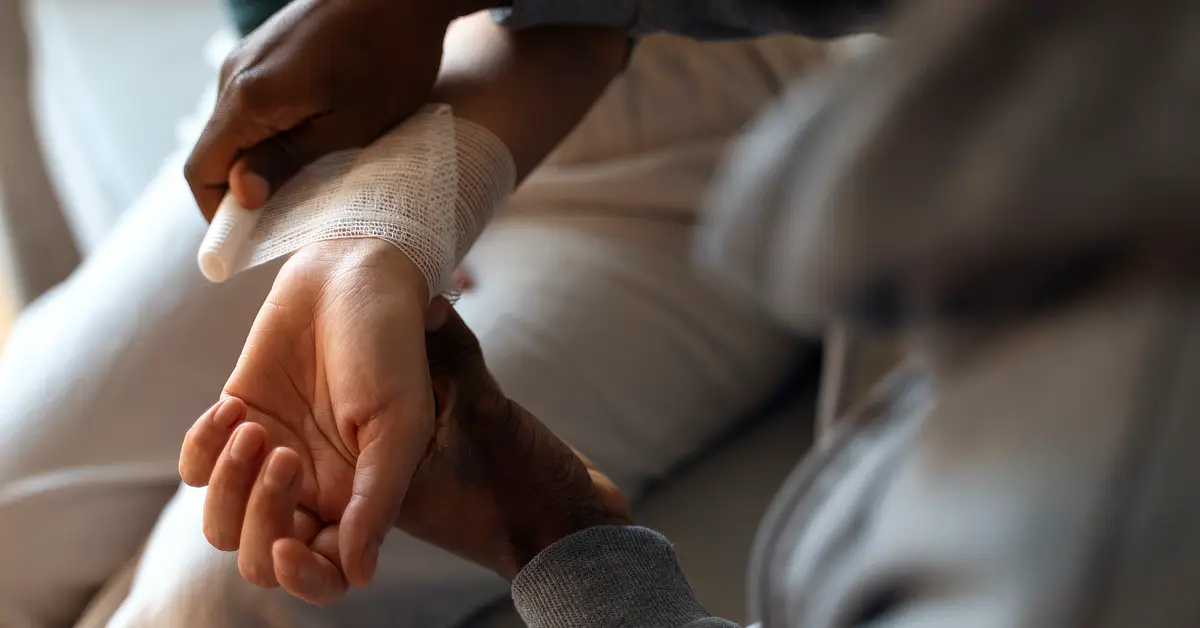Winter is upon us, a season that comes with a number of health hazards, including some associated with heating appliances as well as hot foods and drinks that create greater risks of burn injuries and fires.
Most burn injuries happen in the home. Be aware of the burn hazards around your living space and take precautions to avoid you or your children being burnt.
Heaters
Whether your heater is gas or electric, you should check that it is working properly and safely at the beginning of each winter. For a gas heater, this might include having it serviced.
Make sure your heater cannot be knocked over by people or pets and is not placed near curtains or furniture that might become hot or catch fire. Guards that can be put around heaters can help prevent children going too close to or touching the heater.
In the kitchen
Small children should not be left alone in the kitchen. Children should be supervised closely at all times even when helping to cook.
When cooking, turn all pan handles to the back of the stove where they cannot be grabbed or pushed by children. Be aware of hot food and drinks on tablecloths or surfaces that might be accidentally pulled or knocked over.
Electric blankets
Electric blankets can cause burns and fires if faulty. Test your electric blanket each year by laying it out flat and turning it on, then checking for hot spots as it heats up.
Hot water bottles and heat packs
Hot water bottles should be filled with warm, not boiling water. Check the bottle for leaks each time you use it and wrap it in a towel or cover.
Heat packs should always be warmed and used according to the manufacturer’s instructions. You should never overheat them. Keep in mind that children and elderly people’s thin skin may not tolerate heat well and can burn more easily.
Be aware that steam may come out of a warm heat pack. Be careful when lifting heat packs from the microwave after heating.
Fire safety
Whether you have an indoor fireplace or are building a campfire, it is important to be fire safe. Use a guard to prevent children coming too close to a fireplace and supervise children at all times around campfires, bonfires and braai stands.
Types of burns
Some burns are minor injuries you can treat at home. Others cause lasting damage to your skin, muscles and bones and require long-term medical care. The type of burn depends on what caused it and how severely your skin has been damaged.
Friction burns occur when a hard object rubs off some of your skin. It is both an abrasion and a heat burn. These are common in motorcycle and bike accidents. Carpet burn is another type of friction burn.
Cold burns or frostbite cause damage to your skin by freezing it. You can get frostbite outside in freezing temperatures or if your skin comes into direct contact with something very cold for a prolonged period of time.
Thermal burns are caused by touching something very hot. This raises the temperature of your skin to a point where your skin cells start dying. Very hot metals, scalding liquids, steam and flames may all cause thermal burns.
Sunburn, not likely of course in winter, is a type of radiation burn. Other sources of radiation, such as X-rays or radiation therapy, can also cause such burns.
Strong acids, solvents or detergents that touch your skin can cause chemical burns. You can suffer electrical burns if you come into contact with an electrical current.
Severity of burns
Doctors group burns into different degrees based on how deeply your skin has been harmed. The higher the degree, the more severe the burn is.
First-degree burns only affect the outer layer of your skin. Mild sunburn is one example. Your skin may be red and painful but not blistered. Long-term damage is rare.
If you have a second-degree burn, the outer layer of your skin as well as the dermis, which is the inner layer of your skin, have been damaged. Your skin will be bright red, swollen and may look shiny and wet. You will see blisters and the burnt area will hurt when touched.
If you have a superficial second-degree burn, only part of your dermis has been damaged. You probably will not have scarring. A deep partial thickness burn is more severe. It may leave a scar or cause a permanent change in the colour of your skin.
Third-degree burns, sometimes called full thickness burns, destroy two full layers of your skin. Instead of turning red the affected area may appear black, brown, white or yellow. It will not hurt because this type of burn damages nerve endings.
Fourth-degree burns are the deepest and most severe. They are potentially life-threatening. They destroy all layers of your skin, as well as bones, muscles and tendons.
The degree of burn may change if the damage to your skin spreads and the injury becomes deeper.
Treatment
Minor burns can be treated at home. However, burns can lead to complications, including infection and bone and joint problems necessitating medical attention.
When treating minor burns at home, make sure you are in a safe place and not at risk of being burnt again. Remove clothing and jewellery that is not stuck to the burn from around the burn area. Place the burnt area under cool running water for 20 minutes.
Cover the area with a sterile, dry dressing if the burn is oozing, unless the burn is on your face. You can take painkillers such as paracetamol and anti-inflammatory tablets to manage pain.
Some popular home remedies might do more harm than good. This includes placing ice on a burn or putting butter or toothpaste on it. Ice can damage the sensitive skin around a burn, while other remedies can cause heat to stay in the burn or cause infection.
A child or adult who suffers a serious burn must be treated by medical professionals as soon as possible. Seek immediate medical advice if the burn is large, on the face, hands, groin or feet or if it is deep or becomes infected.
Also seek professional help if the burn is caused by chemicals or electricity or if there are signs of an inhalation injury, including blackening around the mouth or nostrils or swelling of airways.






